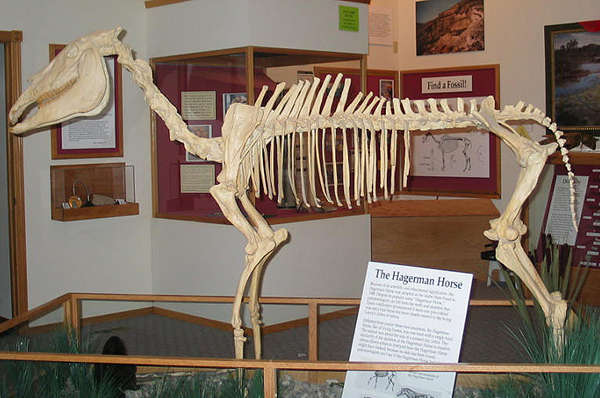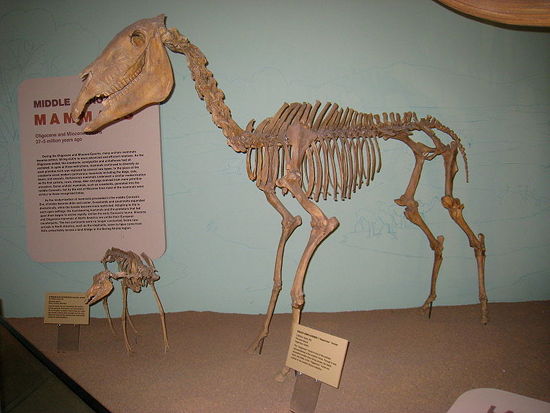
The Hagerman Horse (also called the Hagerman Zebra) was native to North America from the Pliocene to the Pleistocene (around 3.5 million years ago).
From Which The Rest Sprang
These animals are the oldest representative of the modern Equus genus which includes horses, donkeys and zebras. They were around the same size as an Arabian horse but looked more like a zebra with a short, thick neck, and a narrower skull – more like that of a donkey. They were also thought to have a stiff mane, ropy tail and striping on their legs and back.
Their closest living relative is the Grevy’s zebra, still found in Eastern Africa today.

Idaho Loves Them
Interestingly enough, the Hagerman Horse is the official state fossil of their native Idaho. Around 130 complete horse fossils have been found in their namesake, Hagerman Fossil Beds National Monument in Idaho. Although Hagerman remains have been found in other North American locations (Nebraska, Florida & Texas) those found in Idaho are the oldest on record.

Not An Exact Science
Sadly we didn’t have scientists millions of years ago, so trying to piece together the history of horses is tricky business. There is a considerable amount of controversy when it comes to the taxonomy & lineage of extinct equidae. Be sure to meet some of the others like Mesohippus, Orohippus, Eohippus and Hipparion.

prehistoric equus